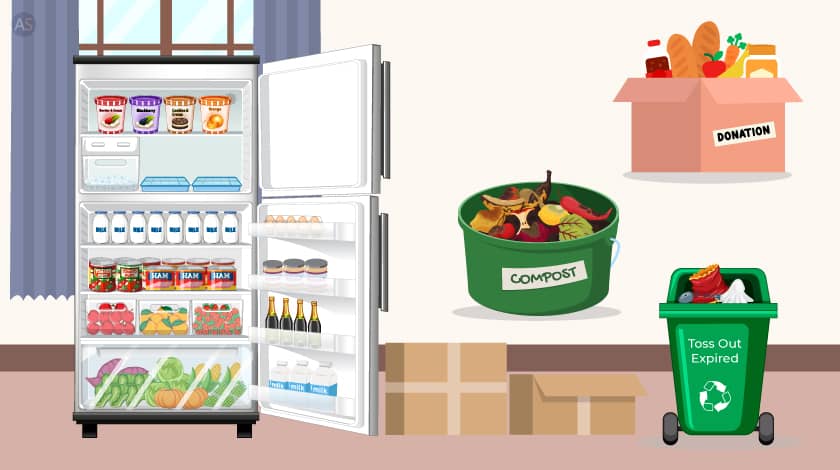Moving with Food: Tips for Transporting Your Pantry and Fridge

While moving to a different location packing and moving food items could become a hectic task. Throwing away food could be wrong and wasteful, instead here are some tips that could help you to pack your food and transport it safely.
Throwing away perfectly good food is not only wasteful but also expensive. However, with some careful planning and organization, it is possible to safely transport your food items to your new home. In this article, we will provide you with useful tips on how to take inventory and categorize your food, figure out what to take and what to leave behind, and properly pack and transport your food items to make your move as smooth as possible.
Step 1: Take inventory and categorized food
Perishable food
Perishable food is the one that could decay or get spoiled if not stored below 40 degree Fahrenheit or below 0 degree Fahrenheit. Some of the examples are meat, dairy products and cooked leftovers.
-
Perishable food needs to be stored in a zip lock or air-tight container.
-
Perishable food could also be stored in a cooler with ice while moving.
Refrigerated food
Refrigerated food is also among the ones that could be spoiled or decay once its out of the refrigerator. Other than meat and dairy products, refrigerated vegetables could also be among them.
-
Store these foods in a cool container or in a place where it stays intact.
-
Label these foods so that they can be identified easily while moving
Frozen food
-
Throw away the expired frozen food.
-
The less you move the less hassle you will have to deal with.
-
Pack the frozen food in such a way so that the food won't be spoiled and could be stocked in the new freezer.
Canned food
Among canned food, perishable and non-perishable items need to be segregated. The non-perishable food items could be donated or given away to neighbors.
Boxed food
Boxed food is usually a non-perishable item, hence these foods could be transported easily. While moving boxed items must be stored in a way that it doesn't get spoiled.
Food products in bottles
Bottled food items such as pickles must be stored in air-tight containers. Bottled food is easy to transport and can be transported easily.
Cooking ingredients
Cooking ingredients such as oil, spices and sauce need to be packed in separate containers. It is better to have a separate space for cooking ingredients since these items are necessary and can be transported easily.
Baking ingredients
Baking ingredients could be wrapped up in a newspaper or wrapper and packed in a box. Labeling these items is crucial so that these items does not get mixed up.
Step 2: Figure Out What You Want To Take
This step is a crucial one, figuring out and labeling food items could simplify the task of moving. While figuring out a lot of food items that could be left behind helps us to plan accordingly.
Step 3: Toss Out Expired (or Near-Expired) Food
Often canned and frozen food items should be tossed out since these food items are of no use. Including these foods could just mean adding unnecessary baggage while moving.
Step 4: Use Up Perishable Foods
Before moving, perishable food should be cooked or donated to neighbors. In case the amount of perishable food is large then you could arrange a get together or farewell party to finish the left over perishable food items.
Step 5: Donate or Share Leftovers
Leftover food that is in excess could be donated to needy people since there is no point in taking these food along with us.
Step 6: Pre-Freeze Your Food Beforehand
Pre-freezing the food beforehand has an added benefit since these foods won't be spoiled and can be used once you relocate to a new location. Pre-freezing would also keep the food intact and fresh, and won't get spoiled at least for a limited time.
Step 7: Pack Edibles the Right Way
The freshness of the edibles such as fruit and veggies depends upon the way its being packed. Proper packaging of edibles could keep the freshness intact and allow us to eat it after relocation.
Step 8: Prepare Something for Moving Day
On the moving day, prepare food that has the chance of getting spoiled while transporting. Some of the food can also be carried along with you while traveling.
Conclusion
By taking inventory and categorizing your food, figuring out what to take and what to leave behind, properly packing and labeling your food items, and using up perishable foods before the move, you can make your move as smooth as possible. Donating or sharing leftover food items is a great way to reduce waste and help those in need. With these tips, you can ensure that your food arrives safely and is ready for consumption in your new home.











